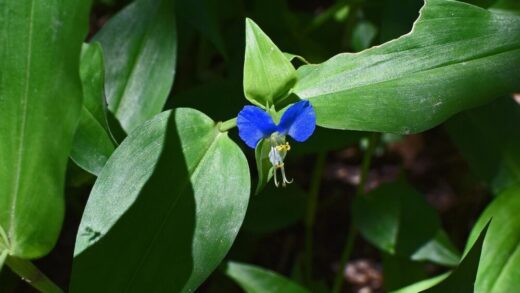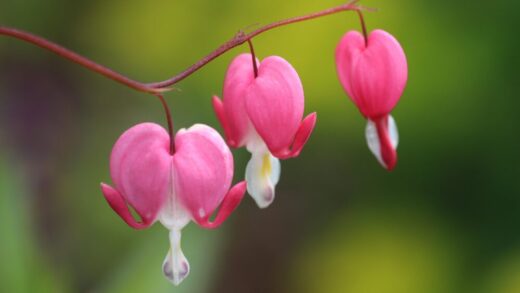Understanding the specific water requirements of the Burnet Rose is key to cultivating a robust and healthy shrub, and thankfully, its needs are quite modest compared to many other garden plants. This species is naturally adapted to dry, sandy, and coastal environments, which has endowed it with excellent drought tolerance once it becomes established. This resilience means that in many temperate climates, a mature Burnet Rose can thrive with little to no supplemental irrigation, relying solely on natural rainfall. However, this drought-resistant nature should not be mistaken for a complete independence from water, particularly during the crucial establishment phase and in times of extreme heat or prolonged drought. The primary goal of any irrigation strategy for this rose should be to encourage the development of a deep, extensive root system that can sustain the plant through dry periods.
The most critical period for providing consistent water is during the first year after planting. During this establishment phase, the rose is focused on growing a strong root system that will anchor it and provide access to water and nutrients in the future. You should aim to keep the soil consistently moist but not waterlogged. A good rule of thumb is to provide a deep soaking once or twice a week, depending on the weather and your soil type. Sandy soils will drain faster and may require more frequent watering than heavier soils. Always check the soil moisture a few inches below the surface before watering to avoid overdoing it.
The method of watering is just as important as the frequency. It is always best to water the Burnet Rose at its base, delivering water directly to the root zone. Using a soaker hose or a watering can with a long spout allows you to apply water gently and efficiently, minimizing runoff and evaporation. Avoid using overhead sprinklers, as wetting the foliage, especially in the evening, can create humid conditions that encourage the development of fungal diseases like black spot and powdery mildew. Watering in the morning is ideal as it gives any moisture on the leaves a chance to dry quickly in the sun.
As the plant matures and enters its second year and beyond, you can significantly reduce the frequency of supplemental watering. A well-established Burnet Rose will have developed a deep root system capable of finding moisture far below the surface. In most regions, natural rainfall will be sufficient to meet its needs. The exception to this is during extended periods of drought or unusually high temperatures. During such times, even a mature plant will benefit from an occasional deep watering to alleviate stress and maintain its health and vigour.
Establishing new plants
The first year in the ground is a formative period for any new shrub, and the Burnet Rose is no exception. During this time, your primary watering goal is to encourage the plant to send its roots deep into the soil. This is achieved through a practice of deep, infrequent watering. When you do water, provide enough to thoroughly saturate the root zone, which could mean several gallons of water for a single plant. This deep watering encourages the roots to grow downwards in search of the receding moisture, creating a resilient and drought-tolerant plant for the future.
Conversely, light and frequent watering should be avoided at all costs. This common mistake only wets the top few inches of soil, which encourages the development of a shallow, weak root system. A plant with shallow roots is highly susceptible to drought stress, as the top layer of soil is the first to dry out during warm weather. It also makes the plant less stable and more vulnerable to being dislodged by wind. Therefore, it is far better to water deeply once a week than to give a little bit of water every day.
The type of soil in your garden will influence how often you need to water a newly planted rose. Sandy soils, which are ideal for the Burnet Rose in terms of drainage, do not hold water well and will require more frequent irrigation. Clay soils, on the other hand, retain moisture for much longer, so you will need to be careful not to overwater, as this can lead to root rot. The best way to determine when to water is to manually check the soil. Dig down a few inches with your fingers or a trowel; if the soil feels dry at that depth, it is time to water.
Mulching is an invaluable aid in maintaining consistent soil moisture for new plants. Applying a two to three-inch layer of organic mulch, such as shredded bark or wood chips, around the base of the newly planted rose will help to slow down the evaporation of water from the soil surface. This means you will need to water less frequently. Mulch also helps to suppress weed growth, and as it breaks down, it improves the soil structure. Just remember to keep the mulch from being in direct contact with the rose’s stems.
Watering mature shrubs
Once a Burnet Rose has successfully navigated its first one to two years in the garden, it is considered established, and its water needs decrease dramatically. The deep and extensive root system it has developed allows it to access moisture from a large volume of soil, making it exceptionally resilient to dry conditions. For gardeners in regions with regular rainfall, a mature Burnet Rose will likely require no supplemental watering at all, making it a very low-maintenance and sustainable choice for the landscape.
The plant itself will give you clear signals if it is experiencing water stress. During a drought, the leaves may start to look slightly wilted or may lose their healthy lustre. You might also notice some yellowing or premature dropping of the lower leaves as the plant tries to conserve moisture. If you see these signs, it is an indication that even this tough plant could benefit from a drink. When you do water a mature, drought-stressed shrub, it is essential to do so deeply, providing a long, slow soaking to ensure the water penetrates far down into the root zone.
The time of year also plays a role in the water needs of a mature plant. The highest demand for water will be during the late spring and early summer when the plant is actively growing, flowering, and setting fruit (hips). Even during this period, however, a well-established plant will often manage without assistance unless there is a significant lack of rain. During the autumn and winter, when the plant is dormant, its water requirements are minimal, and supplemental irrigation is almost never necessary.
It is important to remember that while the Burnet Rose is drought-tolerant, it is not a cactus. It does require water to live. The term “drought-tolerant” simply means it can withstand periods of dryness better than many other plants. In gardens with extremely sandy soil that drains almost instantly, or in regions prone to very hot, dry summers, even mature plants may need an occasional deep watering to perform at their best. The key is to observe your plant and the prevailing conditions and respond accordingly.
Signs of over and under-watering
Learning to recognize the signs of both over- and under-watering is a crucial skill for any gardener. An under-watered Burnet Rose will often show its distress first through its leaves. The foliage may appear dull, limp, or wilted, especially during the hottest part of the day. As the dehydration continues, the leaves, particularly the older ones at the base of the plant, may turn yellow and drop off. In severe cases, flower buds may fail to open, and the overall growth of the plant will be stunted. The soil around an under-watered plant will be dry and hard to the touch several inches below the surface.
Paradoxically, some of the symptoms of over-watering can look surprisingly similar to those of under-watering, which can be confusing. An over-watered rose will also exhibit yellowing leaves that drop from the plant. However, unlike the dry, crispy leaves of an under-watered plant, the yellow leaves on an over-watered one often feel soft and limp. The key difference is the condition of the soil. If the plant is showing signs of distress and the soil around it is consistently soggy or waterlogged, over-watering is the likely culprit.
Over-watering is a more serious and harder-to-correct problem for a Burnet Rose than under-watering. This species is highly susceptible to root rot in poorly drained or constantly wet conditions. When the soil is saturated with water, there are no air pockets for the roots to breathe, and they effectively begin to drown. This leads to decay, and the damaged roots are then unable to absorb water and nutrients, which is why the above-ground symptoms can mimic those of drought. You might also notice a foul, swampy smell from the soil.
To diagnose the problem correctly, always check the soil before you reach for the hose. Dig down with your hand or a trowel to a depth of about four to six inches. If the soil is bone dry, the plant needs water. If it is wet and muddy, you need to withhold water and investigate the drainage of the site. Ensuring your Burnet Rose is planted in well-draining soil from the outset is the best way to prevent the serious issue of over-watering.
The role of soil and mulch
The type of soil your Burnet Rose is planted in plays a fundamental role in its water needs and your irrigation schedule. The ideal soil for this rose is a sandy or gravelly loam that allows water to pass through freely, preventing the roots from becoming waterlogged. While this excellent drainage is beneficial for preventing root rot, it also means that these soils have a low water-holding capacity. Therefore, in very sandy soils, especially during the establishment phase, you may need to water more frequently than you would in a soil with more organic matter.
Conversely, if you are growing a Burnet Rose in a heavier soil that contains more clay, you will need to be much more cautious with your watering. Clay soils are made up of very fine particles that can hold a large amount of water for a long time. While this can be an advantage during dry spells, it also increases the risk of the soil becoming saturated and airless during periods of heavy rain or if you over-irrigate. Amending heavy soils with grit and compost before planting is crucial to improve its structure and drainage.
Mulch is a gardener’s best friend when it comes to water management. Applying a layer of organic mulch around the base of your Burnet Rose has a direct impact on its water requirements. The mulch acts as a physical barrier, reducing the amount of moisture that is lost from the soil surface through evaporation. This is particularly effective during hot and windy weather. By conserving the existing moisture in the soil, mulch extends the time between necessary waterings.
Beyond moisture conservation, mulch also helps to regulate soil temperature, keeping the roots cooler in the summer and reducing stress on the plant. It prevents the growth of weeds that would otherwise compete with your rose for water and nutrients. As organic mulches like bark chips, leaf mould, or compost break down, they improve the soil’s structure and its ability to both hold and drain water effectively. A healthy, well-structured soil is the foundation of efficient water use in the garden.
📷No machine-readable author provided. Svdmolen assumed (based on copyright claims)., CC BY-SA 3.0, via Wikimedia Commons


















